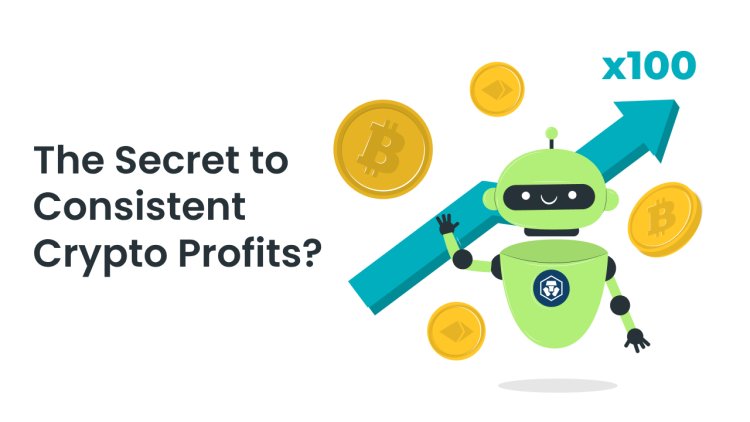Grid Trading Bots: The Secret to Consistent Crypto Profits?
By removing the need for constant monitoring, grid-trading bots provide a more hands-off approach to trading while optimizing returns.
Share this Post to earn Money ( Upto ₹100 per 1000 Views )

Grid trading is a widely used strategy where buy and sell orders are placed at specific price intervals around the market price, forming a grid-like pattern. Grid-trading bots automate this approach, taking advantage of market fluctuations by executing trades that buy at lower prices and sell at higher ones. This method is particularly effective in volatile markets, as it allows traders to capture profits from both upward and downward price movements. By removing the need for constant monitoring, grid-trading bots provide a more hands-off approach to trading while optimizing returns.
But how do these bots work? Let's dive into the mechanics.
How Grid-Trading Bots Operate
Grid Creation:
Price Range: The trader defines an upper and lower price limit for the grid.
Grid Levels: The price range is divided into equal intervals, creating multiple buy and sell order levels.
Order Quantity: The amount of the asset to be bought or sold at each level is determined.
Order Placement:
Initial Orders: Buy and sell orders are placed at the predetermined grid levels.
Order Types: These can be limit orders (executed at a specific price) or market orders (executed immediately at the current market price).
Order Execution:
Price Movement: As the market price fluctuates, the bot executes buy or sell orders based on the grid levels.
Profit Generation: When the market price rises, sell orders are triggered, and when it falls, buy orders are executed.
Rebalancing: The bot continuously adjusts the grid based on market movements, ensuring optimal performance.
Key Components of a Grid-Trading Bot
Market Data Feed: Real-time market data is essential for accurate order placement and execution.
Order Management System: Handles order placement, modification, and cancellation.
Risk Management Module: Implements stop-loss and take-profit orders to protect against significant losses.
Backtesting Engine: Allows traders to test strategies on historical data before live trading.
Advantages of Grid Trading Bots
Automation: Eliminates the need for constant market monitoring.
Efficiency: Executes trades quickly and precisely.
Risk Management: Built-in stop-loss and take-profit features can protect capital.
Potential for Profit: Can generate returns in both rising and falling markets.
Challenges and Considerations
Market Volatility: Extreme price fluctuations can impact bot performance.
Transaction Fees: Frequent trading can increase costs.
Bot Complexity: Developing a robust grid-trading bot requires technical expertise.
Market Manipulation: Bots can be susceptible to market manipulation tactics.
Grid-Trading Bot Development
Developing a grid-trading bot involves a combination of programming skills, market knowledge, and risk management expertise. Key steps include:
Define Trading Strategy: Clearly outline the grid parameters, order types, and risk management rules.
Choose a Development Platform: Select a suitable programming language and framework (Python, C++, etc.).
Integrate with Exchange APIs: Establish connections to cryptocurrency exchanges for data and order execution.
Develop Bot Logic: Implement the grid trading algorithm and order management system.
Backtesting: Thoroughly test the bot on historical data to assess performance.
Risk Management: Incorporate stop-loss and take-profit mechanisms.
Monitoring and Optimization: Continuously monitor bot performance and make adjustments as needed.
Conclusion
Grid-trading bots offer an automated approach to capitalizing on market volatility. While they can be effective, it's essential to understand the underlying mechanics, consider the risks, and carefully develop and test your bot before deploying it in live trading.
Would you like to explore specific aspects of grid-trading bot development in more detail, such as backtesting, risk management, or programming languages?














